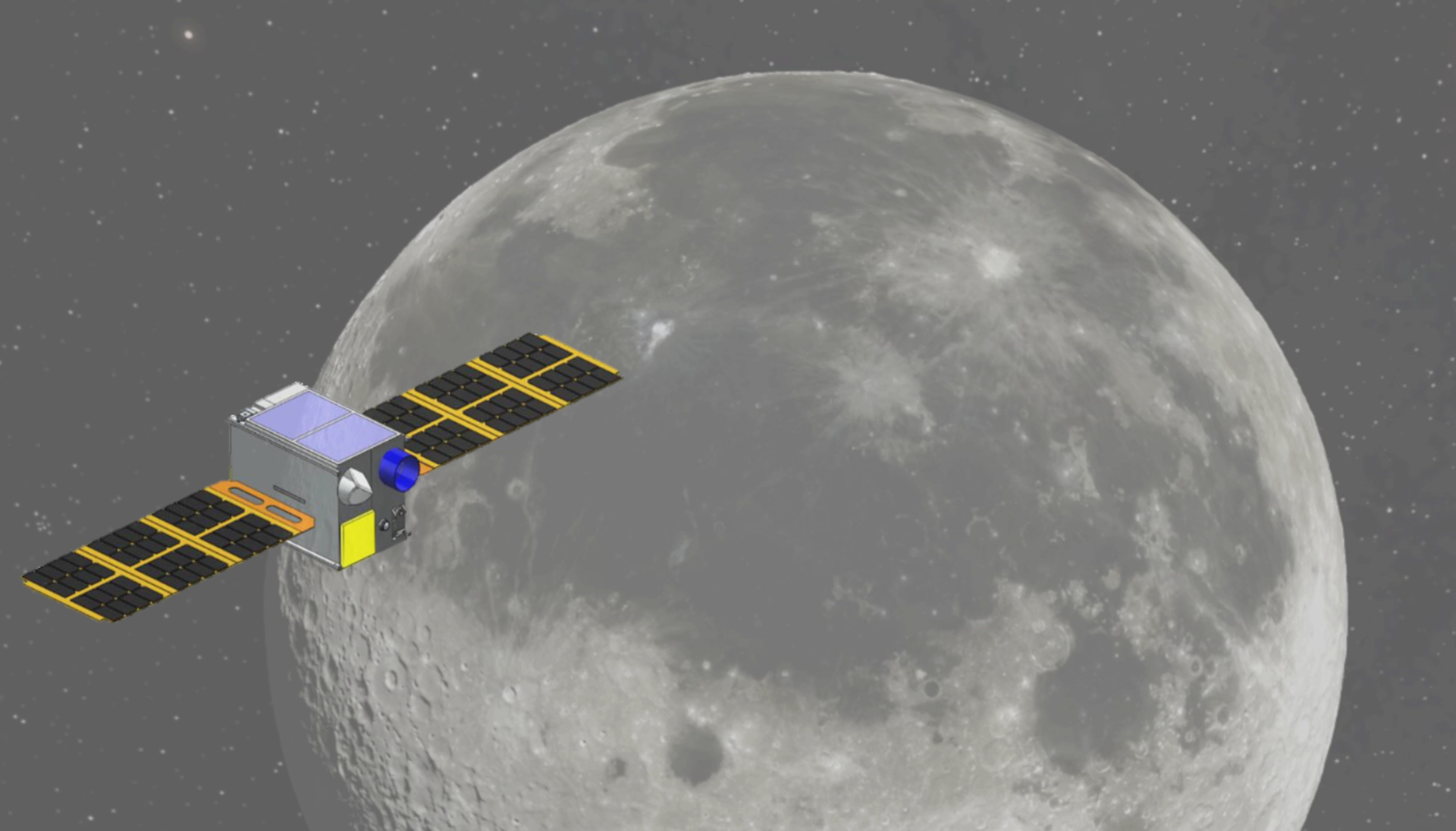VMMO
The mission
The Lunar Volatile and Mineralogy Mapping Orbiter (VMMO) aims to enhance our understanding of the distribution of water-ice and ilmenite in the lunar South Pole. This mission aims to map the distribution of water-ice and ilmenite (FeTiO3), crucial for supporting future human presence on the Moon. By identifying and mapping these in-situ resources, VMMO will address key questions about the lunar water cycle, nighttime frosting, and resource availability, providing invaluable data for lunar science and exploration.
Platform: 16U CubeSat.
Payloads: Multi-wavelength Lidar (LVMM), radiation monitor (CLAIRE).
Programme: European Exploration Envelope Programme (E3P).
Consortia: MPBC (Prime, Lidar developer), University of Winnipeg (Science PI), King’s College University (Science co-I), DEIMOS (Platform prime), Surrey Space Centre (RADFET developer), Critical Software (Platform OBSW), NGC Aerospace (Pointing & tracking).
Mission description
VMMO is a 16U CubeSat equipped with the Lunar Volatiles and Mineralogy Mapper (LVMM), a multi-wavelength chemical Lidar system designed to explore the Moon's shadowed polar regions. The mission also includes the Compact LunAr Ionizing Radiation Environment (CLAIRE) payload to monitor radiation in cis-lunar space and the G3Star GNSS receiver for enhanced lunar data geolocation.
The primary scientific objective of the VMMO mission is:
- To detect water-ice and other volatiles with a precision better than 2% mass fraction in shadowed regions at the poles, with a resolution better than 10 meters.
The secondary science objectives are:
- To investigate nighttime frost deposition beyond permanently shadowed regions (PSRs) to understand the lunar water-ice cycle.
- To identify in-situ resources like ilmenite in sunlit areas.
- To study the lunar diurnal water ice cycle through co-located day and night measurements.
- To monitor the local cis-lunar radiation environment to aid future manned mission planning.
Upon deployment, the CubeSat will enter a commissioning phase to verify the functionality of all systems. This critical phase ensures that the spacecraft is fully operational before commencing its primary mission. Following successful commissioning, the CubeSat will maneuver into a polar frozen orbit. This orbit is strategically chosen to maximize coverage of the lunar South Pole while minimizing the need for station-keeping maneuvers.
During its operational phase, VMMO will perform a series of sequential science operations. In the shadowed regions below 80°S, the LVMM instrument will operate in Active mode measuring surface reflectance to accurately map the distribution of lunar water ice. In contrast, when the spacecraft is over sunlit areas, it will measure reflected solar radiation across multiple spectral bands, providing comprehensive data on the lunar surface composition.
Throughout its operational orbit, the VMMO will primarily maintain a nadir pointing orientation, ensuring that its instruments are always directed towards the lunar surface. This orientation will only be adjusted during communication sessions. VMMO will communicate with lunar Pathfinder and/or directly to Earth to ensure that all the data collected during the mission will be properly downlinked.
After a 12-month operational period, the mission will conclude: all spacecraft subsystems will be de-commissioned and VMMO will then perform end-of-life maneuvers to ensure it impacts the lunar surface. The disposal strategy is conducted in accordance with the ESA latest space debris mitigation standards.
Mission status
Launch: potential opportunities Q4 2028 NASA Commercial Lunar Payload Services (CLPS).
Status: Phase A completed in 2021, Delta Phase A & B1 KO in Feb 2025, SRR in June 2026.


